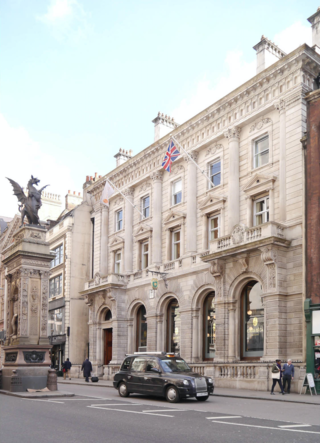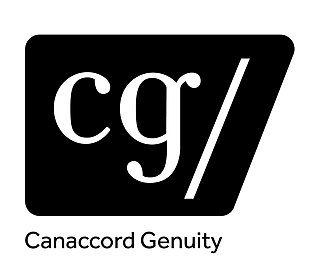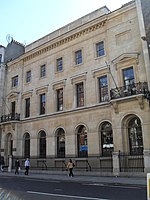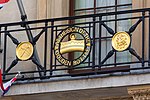
Private banks are banks owned by either the individual or a general partner(s) with limited partner(s). Private banks are not incorporated. In any such case, creditors can look to both the "entirety of the bank's assets" as well as the entirety of the sole-proprietor's/general-partners' assets.

Sir Richard Colt Hoare, 2nd Baronet was an English antiquarian, archaeologist, artist, and traveller of the 18th and 19th centuries, the first major figure in the detailed study of the history of his home county of Wiltshire.

Sir Richard Hoare was an English founder of C. Hoare & Co, the oldest extant bank in the United Kingdom.
J.P. Morgan & Co. is an American financial institution specialized in investment banking, asset management and private banking founded by financier J. P. Morgan in 1871. Through a series of mergers and acquisitions, the company is now a subsidiary of JPMorgan Chase, one of the largest banking institutions in the world. The company has been historically referred to as the "House of Morgan" or simply Morgan.

Schroders plc is a British multinational asset management company headquartered in London, England. Founded in 1804, it employs over 6,000 people worldwide in 38 locations around Europe, America, Asia, Africa and the Middle East. It is traded on the London Stock Exchange and is a constituent of the FTSE 100 Index.

Coutts & Co. is a British private bank and wealth manager headquartered in London, England.
Cazenove was a British stockbroker and investment bank, founded in 1823 by Philip Cazenove. It was one of the UK's last independent investment banks and one of the last to remain a private partnership. The investment banking business entered into a joint venture with JPMorgan Chase in 2004, and the fund management business Cazenove Capital Management spun off in 2005. In 2009, JPMorgan Chase acquired the remainder of the investment banking business. Cazenove Capital Management was acquired by Schroders in 2013.

Brown Brothers Harriman & Co. (BBH) is the oldest and one of the largest private investment banks in the United States. In 1931, the merger of Brown Brothers & Co. and Harriman Brothers & Co. formed the current BBH.

Henry Hoare II (1705–1785), known as Henry the Magnificent, was an English banker and garden owner-designer.

Adam and Company Investment Management Limited is a wealth management company based in Edinburgh, Scotland offering discretionary investment management and wealth planning services to high-net-worth clients in the UK.

Child & Co. was a formerly independent private bank in the United Kingdom that was later part of the NatWest Group. The Royal Bank of Scotland incorporating Child & Co., Bankers was based at 1 Fleet Street on the western edge of the City of London, beside Temple Bar Memorial and opposite the Royal Courts of Justice. Child & Co. was authorised as a brand of The Royal Bank of Scotland by the Prudential Regulation Authority. The last remaining branch closed in June 2022, and it is no longer listed as one of the NatWest Group's brands.
Events from the year 1672 in England.

Canaccord Genuity Group Inc. is a global, full-service investment banking and financial services company that specializes in wealth management and brokerage in capital markets. It is the largest independent investment dealer in Canada. The firm focuses on growth companies, with operations in 10 countries worldwide and the ability to list companies on 15 stock exchanges. Canaccord Genuity, the international capital markets division, is based in Canada, with offices in the US, the UK, France, Germany, Ireland, Hong Kong, China, Singapore, Dubai, Australia, Barbados, and The Bahamas.
Charles Arthur Richard Hoare was an English banker who became a senior partner in the private bank C. Hoare & Co. He was a keen amateur cricketer who played one first-class cricket match for Kent County Cricket Club.

The Gloucester Old Bank was a British bank that operated between 1716 and 1838. It was founded in 1716 by James Wood. The bank was said to have been the oldest private bank in Britain, having survived the financial consequences of the Napoleonic Wars when many other banks went out of business. The claim is wrong as both C. Hoare & Co. and Child & Co. were founded earlier; the Gloucester Old Bank was, however, one of the oldest banks in Britain in the nineteenth century.

Henry Hoare I (1677–1725), known as Good Henry, was an English banker and landowner.
The Gurneys were an influential family of English Quakers, who had a major part in the development of Norwich, England. They established Gurney's Bank in 1770, which merged into Barclays Bank in 1896. They established successful breweries. A number of family members were abolitionists. Members of the family still live in the United Kingdom.

Charles Hoare was Senior Partner of the banking firm of C. Hoare & Co

Henry Hoare of Mitcham Grove (1750–1828) was an English banker, senior partner of Hoare's Bank over four decades.
Hoare Govett was a major British corporate brokerage firm based in London, England. The business was created by a merger between two well established stockbroker firms, Hoare & Co and Govett, Sons & Co. From 1984, the business had been a subsidiary, firstly owned by Security Pacific, until its own near collapse and purchase by Bank of America in 1992, when ABN Amro duly purchased the business. ABN Amro itself was purchased by Royal Bank of Scotland in 2007, before the business was sold on to the Jefferies Group, becoming their corporate broking arm in 2012.



















